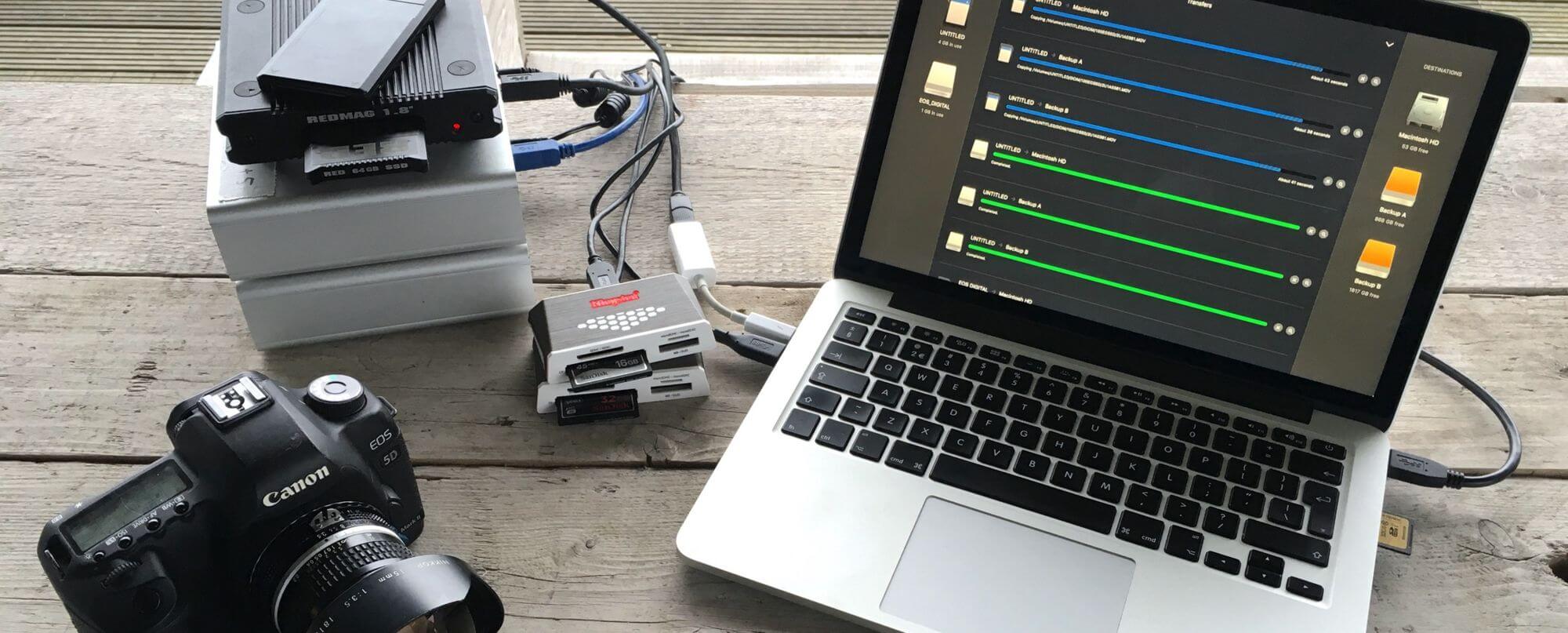From shoot to post without headaches
Why we built Hedge for Mac


Today, we release Hedge 1.0 🍾
Hedge is our first step towards an easier life for everyone working with video footage.
Film production has come a long way in a century. The last decade though, where other creative industries have gained near total creative freedom by going digital, we feel that innovation in video has been focused too much on technical progress. There’s a steep learning curve and it’s not just a creative one.
Problems
When humans are involved, things don’t always go according to plan. It’s just easy to make mistakes, and there are three major causes to blame:
- Too much repetition
- Lack of relevant feedback
- Lack of knowledge
What has this to do with video workflows? Everything.
Repetition
Every job is at least partly based on repetition. We learn from repetition. We need routines to become efficient. The weird thing is, we don’t seem to be very good at it. So we invented software.
Keeping your guard up for mistakes in a routine drains your mental energy, and over time you become tired. Every time you click a button, see a dialogue, or cancel an alert, it takes mental power. Those ‘do not show this…’-tick boxes in apps? They exist because your brain is numbed by doing things over and over again. It’s your nature to want to dismiss them.
Once you learn your brain automates, creating mental space to learn something new. Software can’t really learn (yet), but it can automate.
Imagine you have to import a media disk 100 times per day:
you insert a disk, click a button to copy or to cancel, insert a disk, click a button to copy or to cancel, insert a disk, click a button to copy or to cancel, insert a disk, click a button to copy or to cancel, insert a disk, click a button to copy or to cancel, insert a disk, click a button to copy or to cancel, …
Soon you’ll develop muscle memory: your hands know where to click without you even looking. Cancel the 59th import? You’ve got to kick the habit, which won’t be easy.
Now, let’s automate that:
you insert a disk, 99% chance you want to copy it so you walk away. Click on cancel when you don’t want to import.
Did you notice that if you need to cancel you just add something to your routine. It doesn’t tax you at all. There’s no time pressure, no stress.
With Hedge we want to automate the no-brainer situations. We give you easy escapes, without anything destructive happening. That way you’re sure to have enough energy left for the important stuff.
Lack of relevant feedback
Software throws a lot of information at you. Apps don’t know when you’ve got a need for more information, or when you really can’t be bothered. But you need feedback to build up trust.
Lack of feedback results in lack of use. So feedback overload seems to be the way for most apps. Unfortunately, the cheapest feedback to give you is quantitative. Just the kind of feedback that is not actionable. You always need to draw a conclusion from quantitative feedback yourself. Qualitative feedback on the other hand does part of the thinking for you.
A progress bar that shows just progress doesn’t tell you much. You know you’ll have a copy. When will it be finished? Is it any good? Is the speed ok? What am I copying? At what moment will you experience enough feedback to trust what is going on?

Lack of feedback makes you abandon an app. Feedback overkill will costs you either too much energy, or you slip into ignore-mode which is even worse. You need just enough of it, so it better be qualitative. To create an informed opinion you need the right information at the right moment, instead of continuously or never at all.
Lack of knowledge
Imagine you live in a huge city, and the subway is your only transport. You probably know your standard commute by heart. It’s a habit.
Today you need to go to some address that you’ve never been to before, across town. Do you stumble from station to station? Or do you search for that one guy that knows the whole timetable, and will give you the perfect roadmap? Neither of course, because there’s an app for that.
For some reason, a lot of people in film making are trying to learn the timetable by heart. They don’t construct maps, and are wondering why there is always a bunch of small things not working out. It’s because they don’t know their destination. Here, your house is the camera, and the destination is post production.
If you know where you’re going software can tell you how to get there, and inform you about any roadblocks. You decide if you want the short/cheap/fast/least crowded route. Plus you’ll know if you’ll get there on time too.
The gist? Don’t learn useless things that will be outdated. Specific workflows are like timetables. They don’t teach you anything but a routine. Let software deal with that. Use your time to learn real skills. Learn what makes a good workflow, and use it to hone your creative skills. And use software that doesn’t burden you with learning unwanted things.
What we’d like to change with Hedge
We believe making videos can become less tedious when there’s not so much technical burden on everyone’s shoulders. There will be room for more creativity. Communication becomes more positive and focused on content. Feedback becomes constructive when there are no fingers being pointed.
“To throw something over the hedge” is Dutch for taking your hands off of something, deciding it’s not your problem anymore. Essentially, you make it someone else’s problem. Let’s make it Hedge’s problem.
